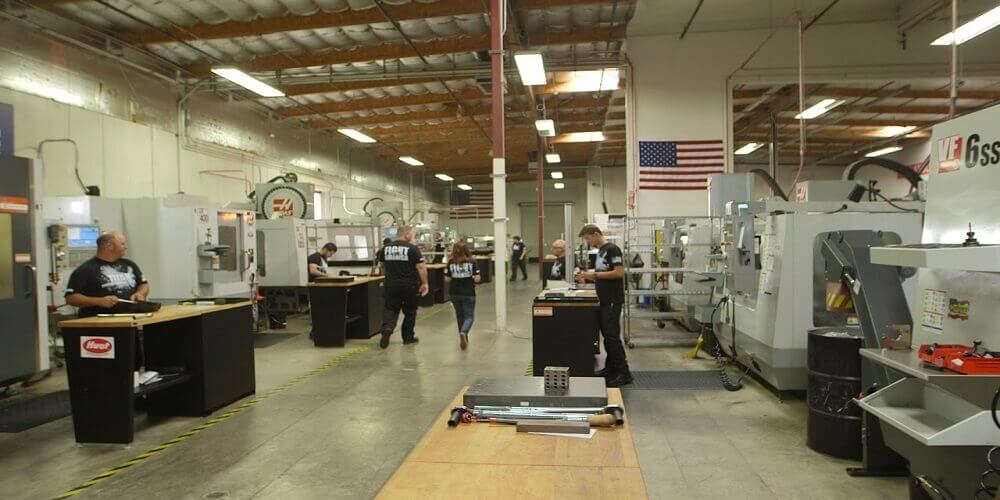CNC machine shops have changed the manufacturing process for good. Typically, subtractive manufacturing processes occur in a machine shop. We wouldn’t call it a shop that has items like a store, but a place that houses machinists and equipment that do things. It can be as large as a factory or a medium-sized room.
Now, these machines are equipped with cutting tool mechanisms. They can cut, shape, drill, or do anything that will remove material from a block or plastic. Some machine shops can have 3D printers, but subtractive manufacturing was the main thing. Now, everything has changed with the advent of digitized CNC shop.
Before we delve into how digitalization has changed how CNC machine shops operate, let’s look at a few things you can find in a typical machine shop
What can you find in a typical machine shop?
1. Machining center
You can also call this a CNC milling machine. In CNC machining, this is the part that is controlled by the computer program. They are several functional pieces of equipment that perform complicated procedures at high rates.
2. Lathe
This machine is rotatory. It rotates the workpiece as it comes in contact with the cutting tool, thus enabling different operations like sanding, facing, etc. A CNC lathe is also called a CNC turning center because it’s also controlled by the computer program
3. Drill press
This drill is mounted, and it moves according to the direction of the lever. These types of drills are more stable and powerful than handheld drills. Plus, you can use them for other manufacturing processes, not just drilling.
4. Grinding machine:
This power tool includes an abrasive wheel that grinds the workpiece to perfection. The grinding process is often done at the end of the operation because it acts as a finishing process.
5. EDM equipment
EDM stands for Electrical Discharge Machining. It involves using sparks instead of conventional cutting tools to infiltrate the workpiece. Over time, alternate versions have sprung up by using wire as an electrode.
6. Bandsaw:
This is a cutting machine that makes several straight cuts at the same time. It is often used to remove sections of material before further processes can occur.
How has digitization changed CNC machine shops?
In the previous section, you saw the typical components of a machine shop. You’d notice that most of those pieces of equipment have been digitized.
Machine shops were forever changed when Computer Numerical Control came into the picture in the latter part of the 20th century. Before then, everything was manually operated, but this wasn’t giving the best results because the accuracy of the process depended on the skill of the machinist.
Now, CNC machines are fully controlled by computer programs. The digital 3D designs are transformed to G-code, and this tells the machine what steps to take to achieve the design. It is so accurate that every movement is controlled down to the last millimeter.
Furthermore, CNC machines can now do very complicated cutting operations within a short time. A CNC machine shop is not just a convenient one. It’s more capable of carrying out more activities and doing more work in less time, thanks to digitization.
Machinists that work at these CNC machine shops are very good at digital design.
